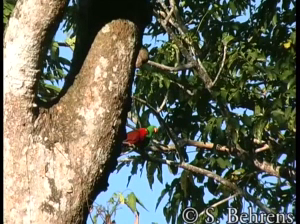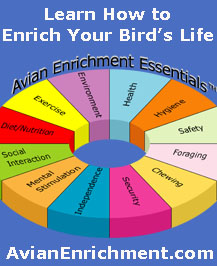Eclectus
|
|||
|
|
|
|
The Electus habitat is described as semi-tropical & monsoon rainforests and lowland forests. Eclectus often travel in pairs or small flocks but large flocks are known to congregate around plentiful fruit trees. Most of their day is spent foraging and at dusk they return to their roosting site with as many as eighty birds. In the wild, they eat wild figs, unripe nuts, flower and leaf buds, berries, blossoms, seeds and even some insects. Two of their favorite foods are pomegranates and corn. Eclectus parrots have two distinct calls. While flying they often repeat a loud noisy screech and while feeding they have a more mellow cry. Eclectus parrots prefer to build their nest holes in the tallest trees near the edge of the forest. There is very intense competition for suitable nest holes. Because of this, once found, female Eclectus may stay in their nests up to nine months per year and have been observed fighting to the death to maintain ownership. These parrots do not mate for life. In fact, both male and female Eclectus often have many mates during the same breeding season. The female and the multiple males all take a role in raising the chicks. Up to seven males have been observed at the same nest hole. Eclectus can breed year round and a clutch is typically two eggs. Female Eclectus incubate the eggs by themselves but both parents feed the chicks and the female only leaves the nest a few times a day to be fed by the male. The wild population of Eclectus parrots is not considered endangered or threatened. |
Listen to Eclectus in the wild: Audio Player View a video of an Eclectus pair mating:
Video Player Watch a National Geographic video on Eclectus: Video Player 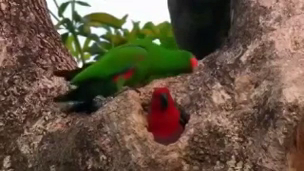 00:00 00:00 Eclectus roratus
© 2015 Cornell University
|
|
|
|
||||||||||||||
|
To see more pictures and obtain information about a variety of species click on the links below:
|
(source: bird-stamps.org)
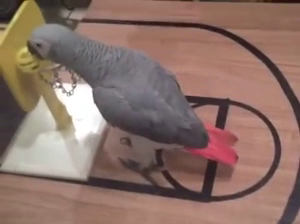 00:00 00:00
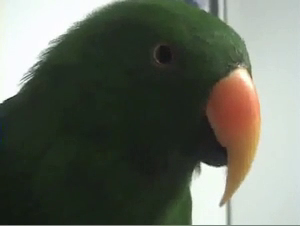 00:00 00:00 |
Related Articles
 Australian Parrots
Australian Parrots
 Indonesian Parrots
Indonesian Parrots







































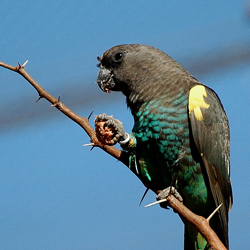




























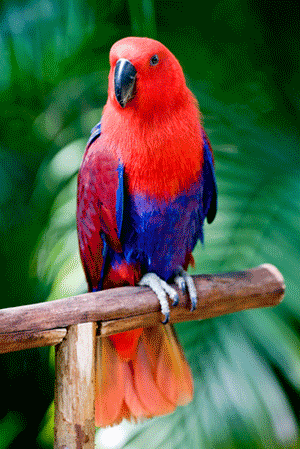 Eclectus (pronounced ek-lek-tuss) parrots set themselves apart from other parrots species because they are most sexually
Eclectus (pronounced ek-lek-tuss) parrots set themselves apart from other parrots species because they are most sexually 
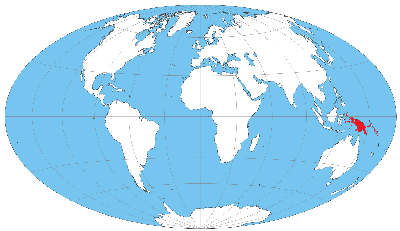 Eclectus parrots are native to the Solomon and the Southern Moluccas Islands, New Guinea and parts of Australia.
Eclectus parrots are native to the Solomon and the Southern Moluccas Islands, New Guinea and parts of Australia.